
The history of Missouri begins with settlement of the region by indigenous people during the Paleo-Indian period beginning in about 12,000 BC. Subsequent periods of native life emerged until the 17th century. New France set up small settlements, and in 1803, Napoleonic France sold the area to the U.S. as part of the Louisiana Purchase. Statehood for Missouri came following the Missouri Compromise in 1820 that allowed slavery. Settlement was rapid after 1820, aided by a network of rivers navigable by steamboats, centered in the City of St. Louis. It attracted European immigrants, especially Germans; the business community had a large Yankee element as well. The Civil War saw numerous small battles and control by the Union. After the war, its economy diversified, and railroads centered in Kansas City, opened up new farmlands in the west.

In the context of the American Civil War (1861–65), the border states were slave states that did not secede from the Union. They were Delaware, Maryland, Kentucky, and Missouri, and after 1863, the new state of West Virginia. To their north they bordered free states of the Union and to their south they bordered slave states of the Confederacy, with Delaware being an exception to the latter.

During the American Civil War, the Union, also known as the North, referred to the United States, governed by the U.S. federal government led by President Abraham Lincoln. It was opposed by the secessionist Confederate States of America (CSA), informally called "the Confederacy" or "the South". The Union is named after its declared goal of preserving the United States as a constitutional union. "Union" is used in the U.S. Constitution to refer to the founding formation of the people, and to the states in union. In the context of the Civil War, it has also often been used as a synonym for "the northern states loyal to the United States government;" in this meaning, the Union consisted of 20 free states and five border states.

The Camp Jackson affair, also known as the Camp Jackson massacre, occurred during the American Civil War on May 10, 1861, when a volunteer Union Army regiment captured a unit of secessionists at Camp Jackson, outside the city of St. Louis, in the divided slave state of Missouri.
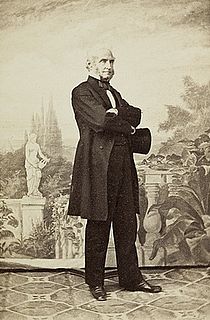
Hamilton Rowan Gamble was an American jurist and politician who served as the Chief Justice of the Missouri Supreme Court at the time of the Dred Scott case in 1852. Although his colleagues voted to overturn the 28-year precedent in Missouri of "once free always free," Gamble wrote a dissenting opinion.
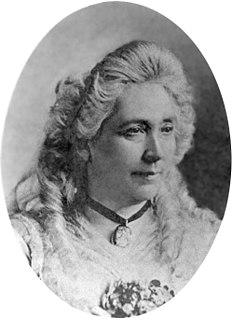
Jessie Ann Benton Frémont was an American writer and political activist.
The city of St. Louis was a strategic location during the American Civil War, holding significant value for both Union and Confederate forces. As the largest city in the fiercely divided border state of Missouri and the most important economic hub on the upper Mississippi River, St. Louis was a major launching point and supply depot for campaigns in the Western and Trans-Mississippi Theaters.

During the American Civil War, Missouri was a hotly contested border state populated by both Union and Confederate sympathizers. It sent armies, generals, and supplies to both sides, was represented with a star on both flags, maintained dual governments, and endured a bloody neighbor-against-neighbor intrastate war within the larger national war.
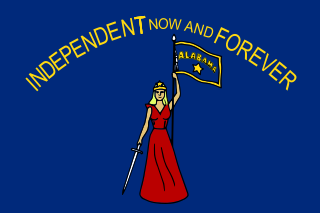
Alabama was central to the Civil War, with the secession convention at Montgomery, birthplace of the Confederacy, inviting other states to form a Southern Republic, during January–March 1861, and develop constitutions to legally run their own affairs. The 1861 Alabama Constitution granted citizenship to current U.S. residents, but prohibited import duties (tariffs) on foreign goods, limited a standing military, and as a final issue, opposed emancipation by any nation, but urged protection of African slaves, with trial by jury, and reserved the power to regulate or prohibit the African slave trade. The secession convention invited all slaveholding states to secede, but only 7 Cotton States of the Lower South formed the Confederacy with Alabama, while the majority of slave states were in the Union. Congress voted to protect the institution of slavery by passing the Corwin Amendment on March 4, 1861, but it was never ratified.
The Unconditional Union Party was a loosely organized political entity during the American Civil War and the early days of Reconstruction. First established in 1861 in Missouri, where secession talk was strong, the party fully supported the preservation of the Union at all costs. Unlike the similarly named Unionist Party, which operated throughout the North, the Unconditional Unionist Party only operated in the border states. Members included Southern Democrats who were loyal to the Union as well as elements of the old Whig Party and other factions opposed to the separate Southern Confederacy. The party was dissolved in 1866.

Phoebe Wilson Couzins was one of the first female lawyers in the United States. She was the second woman to serve as a licensed attorney in Missouri and the third or fourth to be a licensed attorney in the United States. She was the first woman admitted to the Missouri and Utah bars, and was also admitted to the Kansas and Dakota Territory bars.She was the first female appointed to the U.S. Marshal service. After her career in law she played an active part in the Suffrage movement.
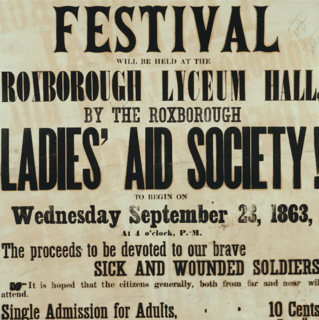
Ladies' aid societies or soldiers' aid societies were organizations of women formed during the American Civil War that were dedicated to providing supplies to soldiers on the battlefield and caring for sick and wounded soldiers. Over the course of the war, between 7,000 and 20,000 ladies' aid societies were established. The work these women did in providing sanitary supplies and blankets to soldiers helped lessen the spread of diseases during the Civil War. In the North, their work was supported by the U.S. Sanitary Commission. At the end of the war, many ladies' aid societies in the South transformed into memorial associations. Free black women often formed their own ladies' aid societies, like the Colored Ladies Soldiers' Aid Society of St. Louis, Missouri, headed by Mary Meachum, which tended to black Union soldiers at the local hospital.
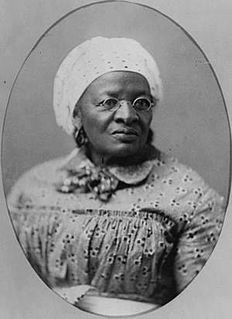
Mary Meachum (1801–1869) was an American abolitionist who, with her husband John Berry Meachum, helped enslaved people escape to freedom in the Underground Railroad, and by purchasing their freedom. The Mary Meachum Freedom Crossing in St. Louis, the first site in Missouri to be accepted in the National Park Service's National Underground Railroad Network to Freedom, was named after her.
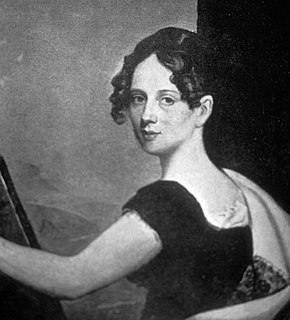
Anna Maria von Phul (1786–1823) was an American artist who used watercolor to illustrate local Creole culture, including architecture, clothing, hairstyles, and other aspects of daily life.
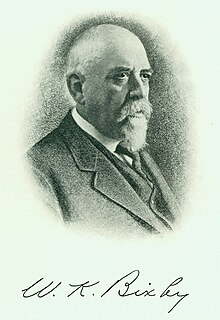
William K. Bixby (1857-1931) was a collector of art and rare books, and is known for his significant philanthropic contributions around the St. Louis area.
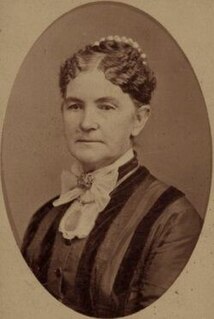
Adaline Weston Couzins was a British-born American civil servant, a suffragist, and a Civil War nurse who worked for the Ladies' Union Aid Society of St. Louis. She spent most of her career as a nurse during the Civil War on hospital ships that tended to Union and Confederate soldiers all along the Mississippi River.
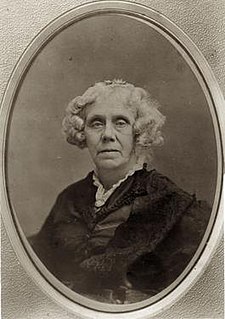
Anna L. Clapp (1814–1889) was the only president of the St. Louis Ladies' Union Aid Society and helped supply for those wounded during the American Civil War. She advocated for women to step outside of their homes and join the efforts to help during the war. She made medical supplies available for injured soldiers and provided shelter for refugees of all color as well. Even when the war was over, she continued to make a difference by creating homes for women and orphans. She was president of the Western Female Guardian Home and the director of the St. Louis Protestant Orphan Asylum.

Rebecca Ann Naylor Hazard was a 19th-century American philanthropist, suffragist, reformer, and writer from the U.S. state of Ohio. With a few other women, she formed the Woman Suffrage Association of Missouri and an Industrial Home for Girls in St. Louis. She organized a society known as the Freedmen's Aid Society, and served as president of the American Woman Suffrage Association.

Women's suffrage in Missouri became more active as a movement after the Civil War. There were significant developments in the St. Louis area, though groups and organized activity took place throughout the state of Missouri. An early suffrage group, the Woman Suffrage Association of Missouri, was formed in 1867, attracting the attention of Susan B. Anthony and leading to news items around the state. This group, the first of its kind, lobbied the Missouri General Assembly for women's suffrage and established conventions. In the early 1870s, many women voted or registered to vote as an act of civil disobedience. The suffragist Virginia Minor was one of these women when she tried to register to vote on October 15, 1872. She and her husband, Francis Minor, sued, leading to a Supreme Court case that asserted the Fourteenth Amendment granted women the right to vote. The case, Minor v. Happersett, was decided against the Minors and led suffragists in the country to pursue legislative means to grant women suffrage.
















